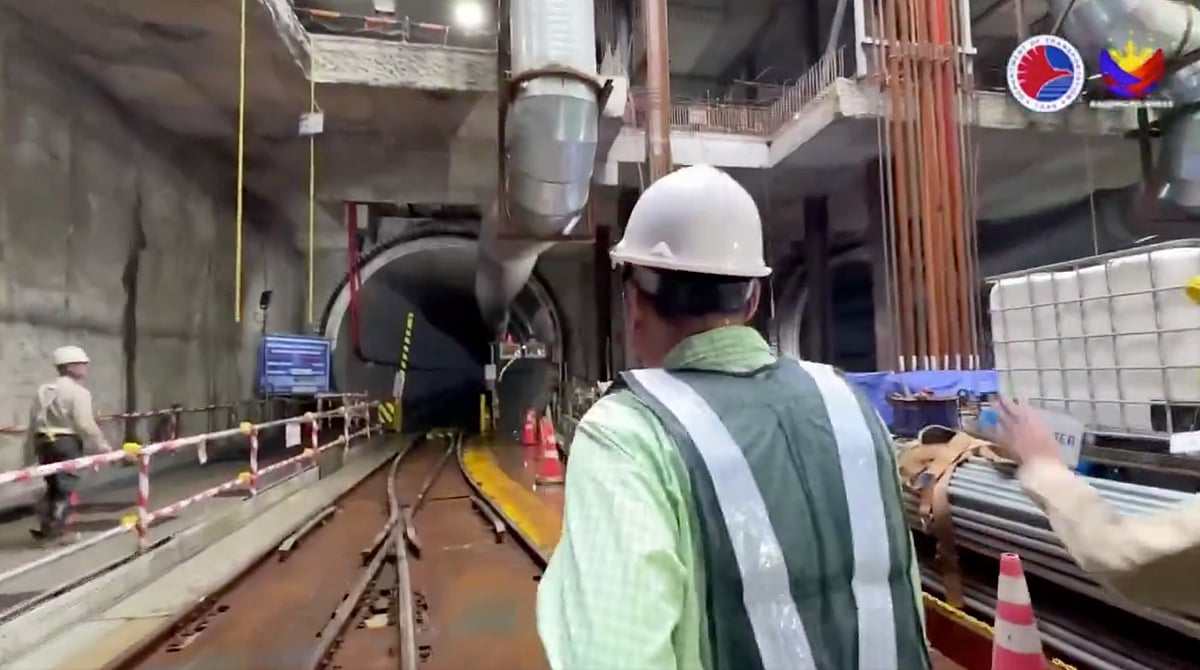Manila Subway Project Advances Amid Construction Challenges
The Metro Manila Subway Project is making significant strides as construction continues to advance despite challenges. With multiple tunnel-boring machines (TBMs) actively working, the project is on track to transform public transportation in the region.
Current Status of the Subway Project
The tunneling operations for the Metro Manila Subway, particularly the section from East Avenue to Ortigas, are now in full swing. This segment, known as Contract Package 103 (CP103), covers a distance of 6.5 kilometers and is being executed by Mitsui Sumitomo Construction Co., Ltd. The project officially commenced in January 2025 and has already seen substantial progress.
Tunnel Boring Machines at Work
Currently, four TBMs are engaged in this section of the subway, with the latest machine recently launched at the Camp Aguinaldo Station. This TBM is expected to reach Anonas Station within six months, operating at an impressive pace of 9 meters per day. In total, the subway project plans to deploy up to 21 TBMs to complete the entire 33-kilometer system, which will include 17 stations.
Overcoming Challenges
While the project is progressing well, it has faced delays primarily due to right-of-way (ROW) issues, which are common in large infrastructure projects. The construction of the Ortigas Station, a crucial interchange for trains heading to Mandaluyong and Ortigas, began in September 2025 after overcoming property acquisition challenges.
Despite these setbacks, transportation officials remain optimistic. As of December 2024, approximately 18.24% of the subway construction was completed, and plans are in place to expedite the excavation and tunneling processes.
Benefits of the Subway System
The Metro Manila Subway is expected to significantly reduce travel times across the metropolitan area. Once operational, it will serve over half a million commuters daily, providing a reliable and efficient mode of transportation. Additionally, the subway will enhance emergency response capabilities by ensuring accessible mass transit for military personnel and their families.
Project Timeline and Future Expectations
Originally, the subway was slated for partial operations by 2025 and full completion by 2027. However, these timelines have been revised, with full operations now anticipated by 2029 or later, and partial operations expected around 2032. The ongoing construction sites, particularly in Valenzuela and Quezon City, showcase the visible progress being made as TBMs continue to carve through Manila’s underground.
FAQs
What is the Metro Manila Subway Project?
The Metro Manila Subway Project is the Philippines’ first underground transit system, designed to alleviate traffic congestion and improve public transportation across Metro Manila.
How many tunnel-boring machines are being used for the project?
The project plans to utilize up to 21 tunnel-boring machines to complete the 33-kilometer subway system, with several already operational.
When is the subway expected to be fully operational?
While the subway was initially expected to be fully operational by 2027, recent updates suggest that full operations may now begin in 2029 or later, with partial operations anticipated around 2032.
Conclusion
The Metro Manila Subway Project is steadily progressing, with significant tunneling activities underway and multiple TBMs in operation. Despite facing challenges related to right-of-way issues, the project aims to revolutionize public transport in the region. As construction continues, stakeholders remain hopeful for a timely completion that will enhance mobility for millions of commuters.
The Metro Manila Subway Project is a critical component of the Philippine government’s broader infrastructure initiative, known as “Build, Build, Build.” This program aims to address the country’s infrastructure deficits and stimulate economic growth through improved connectivity. The subway is designed not only to alleviate traffic congestion but also to promote sustainable urban development by encouraging the use of public transportation over private vehicles.
In addition to its transportation benefits, the subway project is expected to create thousands of jobs during its construction phase and beyond. The employment opportunities will range from skilled labor in construction to various roles in operations and maintenance once the system is operational. The project also emphasizes the importance of local community engagement, with efforts to minimize disruption to residents and businesses in the areas surrounding construction sites.
As the subway progresses, it is essential for stakeholders to monitor the project’s impact on local ecosystems and urban landscapes. Environmental assessments and mitigation strategies are being implemented to ensure that the construction activities do not adversely affect the surrounding environment. This holistic approach aims to balance infrastructure development with environmental sustainability, ultimately contributing to a more resilient urban infrastructure for Metro Manila.
Also Read:
Corruption in the Philippines: Current Insights and Impact







